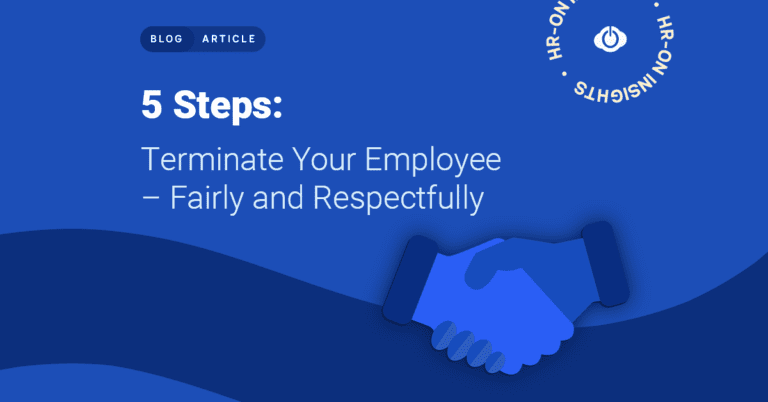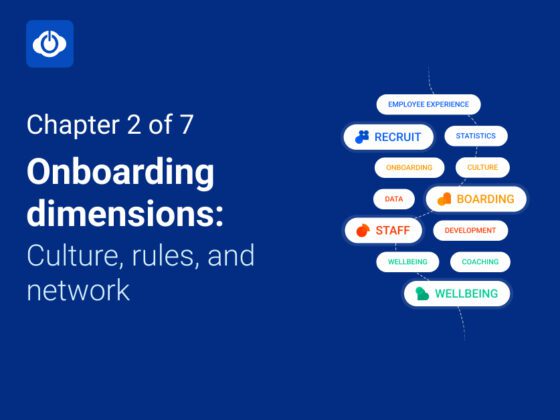5 Steps to a Fair Employee Termination
As a leader, you may sometimes need to terminate an employee, which requires careful planning. Here are 5 steps for a respectful employee termination.
Employee termination is a tough but necessary task for any leader. If you’re facing a termination, handling the process correctly from start to finish is crucial. This requires:
- An understanding of the legal framework for employee termination
- A respectful and professional approach that considers both the company’s and the employee’s needs
This guide provides 5 steps to ensure a fair and effective employee termination that follows the law.
Summary: 5 Steps to Employee Termination
1. Employee Termination: How to Prepare Effectively
Before you terminate an employee, make sure everything is in order. The best-case scenario is if the termination conversation and the entire offboarding process run smoothly. This benefits both the employee and the company.
It’s a good idea to:
- Review the employment contract: What does it say about the notice period and other terms?
- Follow the rules: Are there collective agreements or specific legal requirements you need to consider?
- Consider alternatives: Could the employee be reassigned rather than terminated?
Ensure you’re well-versed in the law before proceeding with an employee termination. Specific regulations apply, such as notice periods for salaried employees, limitations on terminating an employee during sick leave, and stricter requirements when terminating a pregnant employee. Letting someone go is rarely easy and should always be the last resort.
You might also like: Get Your Hands on the Ultimate Offboarding Checklist
2. Understand the Legal Requirements for Employee Termination
It’s important to ensure that you are making a legitimate termination, especially if the employee has been with the company for several years. Pay attention to:
- Specially protected employees: Is the employee pregnant, a union representative, or on sick leave? Be mindful of anti-discrimination and equal treatment laws
- Notice period: Make sure to comply with the applicable notice period
3. How to Write a Proper Employee Termination Letter
If you’re in a situation where a written termination is also required, ensure it is correctly worded. In other words, it should be written in clear language without room for misunderstanding or misinterpretation.
Your termination letter should include:
- The termination date and the employee’s last working day
- The reason for the termination
- Practical information about vacation and severance arrangements
A well-written employee termination notice should never be rushed. Take the necessary time to ensure it is clearly and properly worded
4. Conducting a Professional Employee Termination Meeting
When it’s time for the actual termination conversation, it’s important that it’s conducted in a respectful and professional manner. The conversation may be difficult, but it’s necessary.
Keep the following in mind:
- Choose the right time and place: Make it private and free of distractions
- Bring a witness: For example, a HR or People & Culture employee
- Be clear in your communication and show empathy
- Expect a reaction: Some employees may be upset, others may be angry. Listen and give them space
You might also like: Why and How to Use Exit Interviews
5. Streamlining Offboarding After an Employee Termination
Once the termination is done, there are still a few important tasks. You can do several things to ensure a smooth offboarding process.
- Offer help, if possible: For instance, be available for references
- Use HR-ON Staff’s process tool to follow a streamlined offboarding plan
- Inform the team: Be honest but discreet about the reason for the termination
- Ensure a smooth handover: The employee’s tasks should be reassigned to others
By following these steps, you’ll be well-prepared to ensure a professional and fair employee termination – for both the company and the employee involved.
FAQ: How Do I Ensure a Fair Employee Termination?
What legal regulations should I be aware of when terminating an employee?
You must ensure that the employee termination complies with applicable laws, including the employment contract, collective agreements, and notice periods. Also, be aware of specially protected employees, such as pregnant employees, union representatives, and those on sick leave, as special rules apply to their termination.
How do I formulate a proper termination that complies with the law?
A written termination must be clear and precise to avoid misunderstandings. It should include the termination date, the last working day, the reason for the employee termination, and practical details such as vacation settlement and severance arrangements.
How can I make a termination meeting more professional and respectful?
Plan the conversation carefully and choose a private location free from distractions. Communicate clearly and empathetically, and be prepared for different reactions from the employee. It may be a good idea to have an HR representative or another witness present to ensure a proper process.
What should I keep in mind when handling an employee termination?
An employee termination involves more than just the termination meeting itself. You need to ensure a proper offboarding process, including a smooth handover of tasks, clarification of vacation arrangements and severance terms, and possible support for the employee in their job search.
How do I ensure a smooth handover of tasks after a termination?





